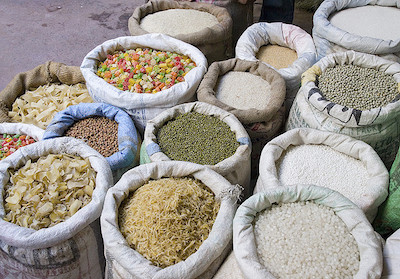Difference between revisions of "Agriculture for Improved Nutrition"
| Line 1: | Line 1: | ||
| − | [[Image:grain agriculture.jpg|thumb|right|200px|]] | + | [[Image:grain agriculture.jpg|thumb|right|200px|Source: [http://agrodaily.com/2015/03/30/india-total-food-grain-production-to-come-down-minister/ agrodaily.com]]] |
Since the food crisis in 2008, agriculture and nutrition are back on the international agenda. An important boost was given by the Lancet Series on maternal and child nutrition (2008 and 2013), the Committee on World Food Security (CFS) and the Scaling Up Nutrition-movement (2010). | Since the food crisis in 2008, agriculture and nutrition are back on the international agenda. An important boost was given by the Lancet Series on maternal and child nutrition (2008 and 2013), the Committee on World Food Security (CFS) and the Scaling Up Nutrition-movement (2010). | ||
Latest revision as of 01:07, 6 June 2015

Since the food crisis in 2008, agriculture and nutrition are back on the international agenda. An important boost was given by the Lancet Series on maternal and child nutrition (2008 and 2013), the Committee on World Food Security (CFS) and the Scaling Up Nutrition-movement (2010).
Despite subsequent world-wide increase of food availability, the number of undernourished people hardly decreased, staying far above the target of MDG 1. The need for intervention strategies at two different levels was identified: 1) direct or nutrition specific interventions that affect the immediate determinants of nutrition (food/nutrient intake and disease) and 2) nutrition-sensitive interventions that affect the underlying determinants of adequate nutrition, to which a major contributor is agriculture. In other words agricultural programs need to become more nutrition sensitive. This is taken up further in the 2014 Global Nutrition Report, which stresses that actions and accountability are crucial for accelerating the World’s Progress on Nutrition.
Recently, a broad consultative process took place with involvement of FAO, GGIAR, the World Bank, Harvest plus, and many more international as well as civil society organizations, in order to reach consensus on the way in which agriculture could contribute to improved nutrition. This resulted in the following set of key recommendations.
| Key Recommendations for Improving Nutrition through Agriculture
The food and agriculture sector has the primary role in feeding people well by increasing availability, affordability, and access of diverse, safe, nutritious foods and diets, aligned with dietary recommendations and environmental sustainability. Agricultural programs and investments can strengthen impact on nutrition if they:
|
Acknowledgements
- FAO website, Nutrition Policies and Programs.
- FAO Video: Investing in Agriculture for Nutrition.
- FAO, Making Agriculture work for Nutrition, synthesis of guiding principles
- SCN NEWS # 40. Changing Food Systems for better Nutrition. 2013
- Wageningen University offers a special course on Agricultural Nutrition Linkages.
- IFPRI. Global Nutrition Report 2014.

